Some of the links in this post are affiliate links. This means if you click on the link and purchase the item, I may receive an affiliate commission at no extra cost to you.
Planning a trip and wondering what the best diving spots in Philippines are?
The Philippines is a southeast asian country made up of over 7000 islands. With that many islands, it’s no surprise that it’s full of amazing scuba diving opportunities.
The country is brimming with crystal clear oceans, a wide range of both big and small marine life, and a warm tropical climate to boot. From shipwrecks to coral reefs, the country is a haven for underwater explorers.
One of the highlights of diving in the Philippines is the sardine run in MoalBoal, where millions of sardines form large schools that spread on for ages. The thresher sharks in malapascua are another popular attraction, with their unique longtails and curious personalities.
Barracuda Lake in Coron is another must-see dive site, featuring a thermocline that separates the warm surface water from the cold and clear freshwater. These are just a few examples of the best diving in the Philippines, but there are tons more below for you to add to your diving bucketlist.
Before you read on, here are my top 3 diving products:
If you want decent pictures but don’t want to spend thousands on underwater camera gear, opt for a Go Pro.
An affordable dive mask that you feel comfortable in. Opt for a mask with a black base, rather than a see through one.
A wetsuit with the zip at the back. It’s easier to get out of a back zipped wetsuit than it is one zipped at the front. Especially when wet!
Read on to find out the best dive spots in the Philippines.
Amos Rock at Tubbataha Reef
Amos Rock is a dive site on the north of Tubbataha Reef, and the reef was declared a National Marine Park and a UNESCO World Heritage Site in1993. Only reachable by liveaboard between March and June, Amos Rock starts with a smooth slope that later transforms into a wall dropping very deep down.
Home to numerous marine species, most divers visit this area because of the chance to see a wide variety of large fish. The fish able to be seen include snapper, large groupers, mackerel, napoleons and much more.
Sharks are able to be seen at Amos Rock too, and you may get to see groups of them depending on the time of year. Expect a chance to see white tip reef sharks and grey reef sharks in this corner of the ocean.
Barracuda Lake in Coron
If you are wondering where the name Barracuda Lake came from, we’ve got all the details. The lake was named after the barracuda fish skeleton found in the depths of its water, and is one of the most unique and best diving spots in the Philippines.
While barracudas undoubtebly use to frequent this lake, these days, its much less common. Although if you’re lucky, you may see one.
One of the famous diving sites in the entire country, the lake is composed of both fresh and salt water. The most notable feature of the lake, especially felt by divers is its layers of cold, warm and hot water which is known as the thermocline.
Starting out on the surface, you can expect the temperature to be a bit warm but as you descend into the depth of the lake, it will begin getting warmer. This will happen once you cross the thermocline.
Further down, the lake water changes even more, with an almost jelly-like consistency at its base.
Twin Rocks in Anilao
Love underwater photography? Twin Rocks is one of the most appreciated underwater diving sites in the Philippines, and specifically in Aniloa.
What’s interesting about the site is that it will allow you to access both the great micro and environmental scenery. Furthermore, you will get the opportunity to see the biodiversity that lives around the two rocks named after the dive site.
At the Twin Rocks dive site, you will have the chance to see clownfish, ribbon eels, lionfish, damsels, countless nudibranchs and schools of Carangidae. Shrimps, rabbitfish, and crabs are also found in the spot.
Anda on the Island of Bohol
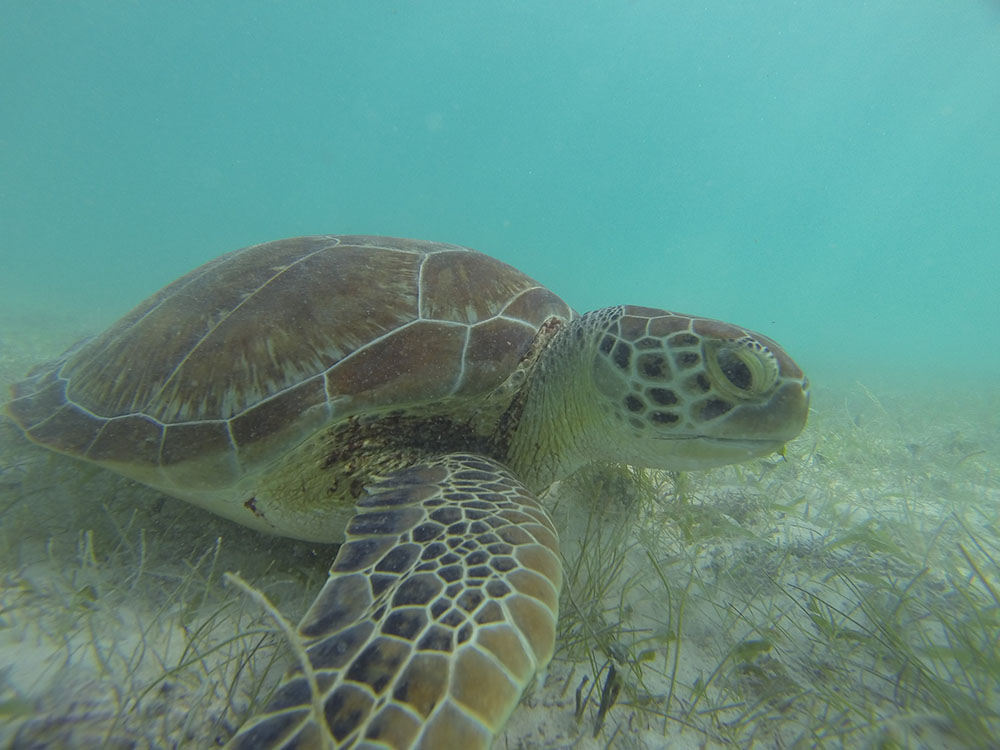
Searching for the perfect off- the beaten path dive vacation in the Philippines? Then look no further. Anda in the island of Bohol is a great choice for novice and experienced divers.
Popular with Germans initially, the diving spots at Anda were their secret before other divers found their way to the outstanding sites. The reef is approximately 20 meters deep, with some sites having drop offs which increase the depth to 35 meters.
When underwater, you will see pygmy seahorses, nudibranchs, dragon sea months, napoleon snake eels, and shrimps such as skeleton, anemone, and mantis. Turtles and loads of beautiful reel fish are also visibly seen.
Canyons in Puerto Galera
Host to an extremely large number of species of sea life and coral, Canyons is a favorite site amongst divers who are familiar with the Philippines. The most popular dives in the site are for well known due to its immense diversity in corals and fish.
Home to all the tropical fish you could imagine, and different colored corals, you will find small and big fish. This includes the damselfish, snapper, batfish, butterflyfish, eels, sea snakes, and scorpionfish among others.
To ensure your oxygen levels last longer for the chance to visit the three canyons, you should dive into the site during flood tide. This way you will swim along with less effort and energy.
Divers’ Heaven in Balicasag
If you’re visiting Balicasag and are unsure of where to dive for the day, most will encourage you to try a dive to Diver’s Heaven. A wall dive between 10 and 40 meters, this particular spot is not affected by dynamite fishing and therefore the underwater life is preserved.
The current varies from light to moderate while the slope gets steeper around Cathedral in the north-west. When it comes to marine life, there are large schools of fish such as jacks and barracuda which populate the area, and are indifferent to divers.
Notably, the dive is most interesting at 15meters and not below 25 meters, and its one of the more interesting, shallower dive sites in the Philippines.
Monad Shoal in Malapascua
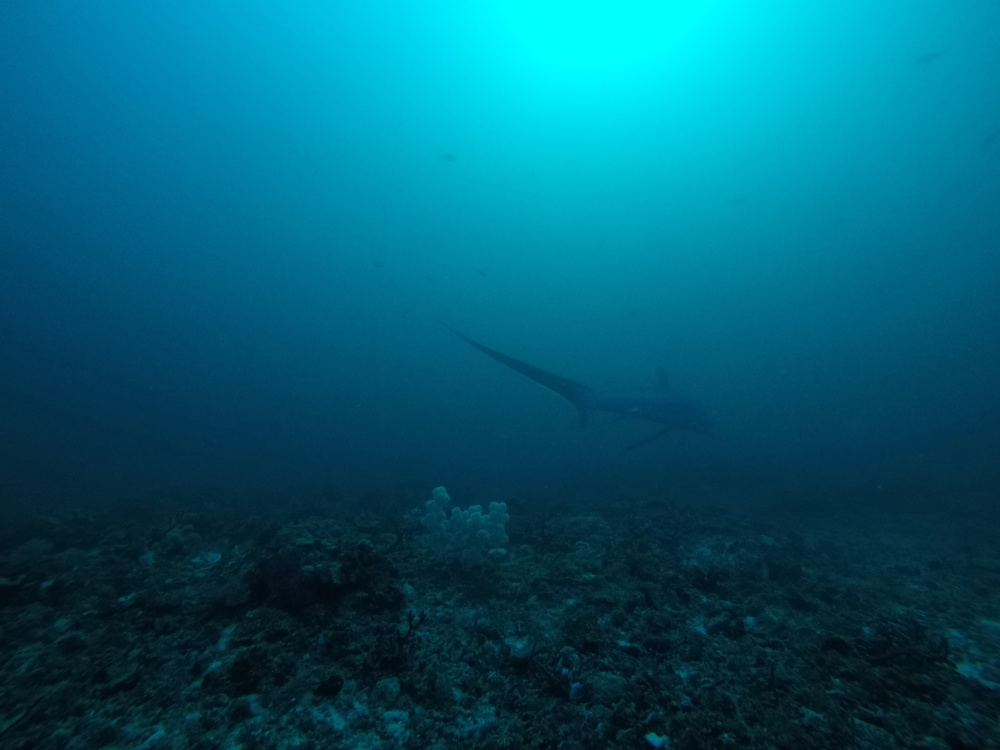
A unique experience located on an island of the northcoast of Cebu, named Malapascua, Monad Shoal is known for its population of thresher sharks. To dive here, you’ll need to get up in the early hours of the morning and hop on a boat out to the shoal.
Currents can be moderate here. I dived her with about 15 dives under my belt, very few with currents, so the current is something new divers should be aware of. In saying that, the current was only really noticeable at the safety stop, and when first entering the water. Once below, it was not so noticeable.
Once you reach the feeding station, you’ll rest in a line with the other divers in your group while waiting for the sharks to swim overtop and in front of you. The sharks aren’t overly interested in the divers who come to watch them.
Dakit-Dakit in Malapascua
Highly preferred by beginner divers who are curious about night diving, Dakit-Dakit is a great spot.
The only dive site which is easily seen from the dive center of Sea Explorers, there is a nice soft coral garden with much marine life. Between those soft corals, you will find pipefish, nudibranchs, flatworms, seahorses and even different shrimps.
Moreover, there are schools of small sardines hiding in the water, while you can also catch a glimpse of jacks and tunas patrolling the place.
Keep in mind, many of the reef animals sleep during the day and come out at night. Therefore, diving at night will enable you to see marine life not usually seen during the day.
Coconut Point in Apo Island
If you’re visiting Apo Island for some days, Coconut Point is one of the best diving sites for advanced divers. The current can be strong and unpredictable, but with good conditions, a colorful reef, bigeye trevallies and big fish await you.
Interestingly, once you descend at the Coconut Point, you will get to see grey sandy slope which is home to garden eels, shrimp gobies, and pipefish. Additionally, if you drop down 25 meters you will find yourself admiring the lovely soft coral, sea whips, and large barrel sponges covered in feather stars.
Continuing along the reef, you will be able to explore gutters, ledgers, and walls covered in beautiful corals.
Okikawa Maru – Coron Bay, Palawan
Interested in an epic scuba dive? Okikawa Maru in Coron Bay is a fascinating dive site. A great place to dive all year long, Okikawa Maru is the largest wreck of the Coron Bay in the Philippines.
Sometimes referred to as the “poor Man’s Chuuk lagoon”, the bay served as a brief harbor for several Japanese warships during World War II. However, in September 1944, eleven of these ships were sunk by American air raid but the most interesting shipwreck to explore is a former civilian tanker.
The shipwreck now lies upright 26 meters deep, but the main deck is around 12 meters deep. Therefore you can either drift outside the wreck or manoeuvre inside especially inside the engine room by the propeller shaft.
The marine life is pretty and you can be able to spot groupers, sweetlips, as well as lionfishes and nudibranchs.
Manta Bowl in Ticao Pass, Donsol
For a wild diving ride, visit Manta Bowl which sits between the plankton-rich waters of the Ticao and Burias Passes. With a continuous flowing current, the alley is used as a cleaning and feeding station by different ocean creatures, and a popular spot for manta rays.
The best time to spot manta rays at the Manta Bowl is from December to late May.
Being one of the largest and harmless rays in the world, Manta rays are mostly found in tropical waters. Known to be curious creatures, if you come across one, it won’t be a surprise that they will approach you.
Other sea animals include whale sharks, hammerheads and tiger sharks. The whale sharks gather at this time to feed on plankton, squid, krill small fish and invertebrate larvae.
Barges in Subic Bay
For a thrilling wreck diving choose Barges in Subic Bay. The name of the place was derived from large numbers of barges that were placed by the American Forces.
With the barges and pontoons been scattered about, you will see that it has been divided into sections. Split into two prominent areas, the Barges Subic dive site is reminiscent of the letter T.
Now the site is a habitat for loads of corals and sea life. Some of the common fish types you will definitely see are lionfish, garden eels, shrimps, prawn, groper, pipefish and many more.
Note that, due to its sandy bottom, the site is very convent for training dives for first open water experience to practice scuba diving.
Moalboal in Cebu
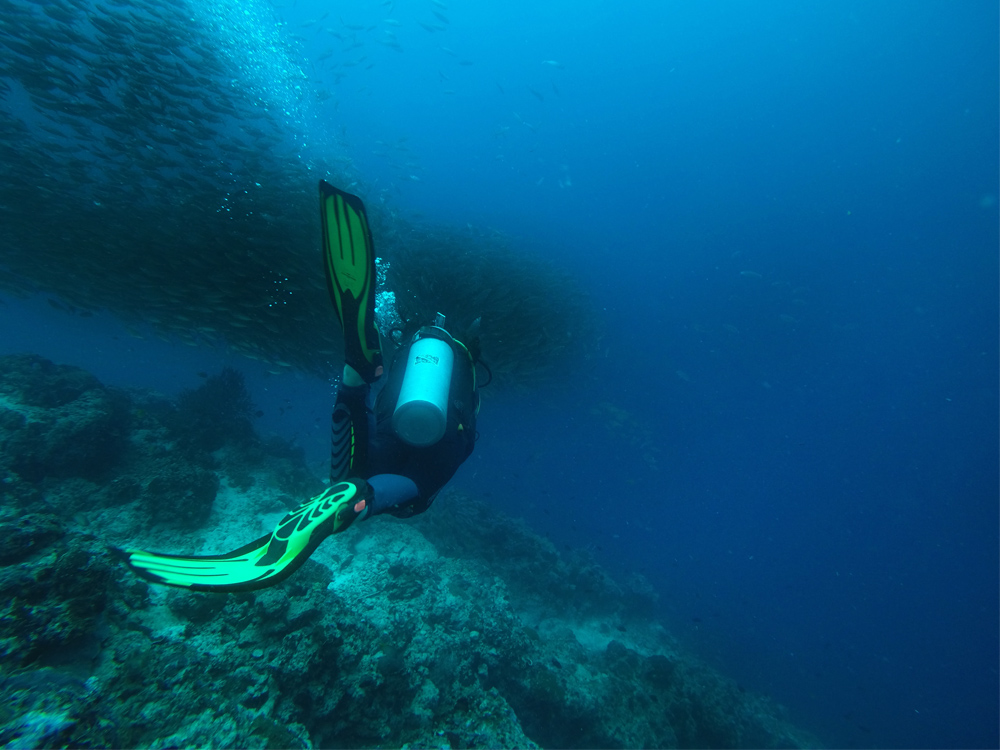
If you think you have seen it all, then you haven’t been to Moalboal. Best known for its Sardine Run, you will be amazed by the millions of sardine estimated to reside in here.
With or without scuba diving equipment, you can experience a mind-blowing moment as you watch the sardines congregating in one enormous school and swim in synch. You will get to see sardine dodge around barracudas, sometimes sharks, and trevally as one group as they seem like they are dancing through the sun rays.
Visible every single day of the year, it’s interesting to learn that the sardines are not fed by humans to get them here, and they are marine protected. Sardines swarm in groups and often swim close to the surface. They’re filter feeders so they consume what they can, and then filter out the bad stuff.
Since they are always at the surface, you will get an amazing view while below them as they move about blocking the sun.
The ease of access to this site is perfect for those who can’t afford multiple dives here, but want to return to watch the phenomena more than once. Book atleast one dive for sure, but if funds are tight, you can grab some snorkeling gear and snorkel here without a tour afterwards.
This is one of the best diving spots in the Philippines because its easy to access, and in the right season, its a great place to see tons of sardines.
Yapak in Boracay
Different from all other dive sites in Boracay, Yapak was voted by divers as one of the best in the region. The wall starts around 30 meters and drops down to +60 meaning you need to be an experienced diver to enjoy this spot.
Once you reach the wall, you are welcomed by a cloud of blue and red toothed triggerfish, unicornfish and Moorish idols. If you get near the wall itself, among the patches of hard and soft coral you will see colorful nudibranchs. Leaf fishes are also present swaying gently with the current.
Other amazing marine life in the area include whitetip reef sharks, big schools of dog tooth tunas, trevallies and the occasional barracuda. If you are really fortunate, you might even spot the unique Mola Mola floating by or basking in the sun.
Apo 29 in Apo Reef Natural Park
The second-largest coral reef in the world after the Great Barrier Reef in Australia, Apo Reef is also the largest in the Philippines. Consisting of three islands which are surrounded by lush mangrove forest, the Park is also the second UNESCO Heritage World Site in the country.
The reef serves as a nursery and spawning ground for coastal and marine species.
One of the best challenging dive sites in the area, Apo 29 rises to 25 meters (82 feet) below sea level. Ideal for advanced divers on overnight trips, you might spot various reef sharks, manta rays, thresher sharks and school of pelagic fish.
Other than that, you will find the most curious sharks getting close to the divers than in other Apo Reef areas. Best dived from a liveaboard, you should know that many dive operators require 100 dives to be able to take you to the reef. This is due to its secluded area.
Sombrero in Anilao
Barely being able to cover a fraction of the reef with a single dive, Sombrero has a valley, pillars, walls, and flat areas. In this reef, you will find typical fish with micro subjects as well.
You will also see hard and soft corals, gorgonians, sponges, crinoids and much more healthy and vibrant marine life. Additionally, other frequent sea creatures you will see in the reef are eagle rays, mantas, ribbon eels, scorpion fish, sea turtles, tuna and sharks.
Best Time to Dive in the Philippines
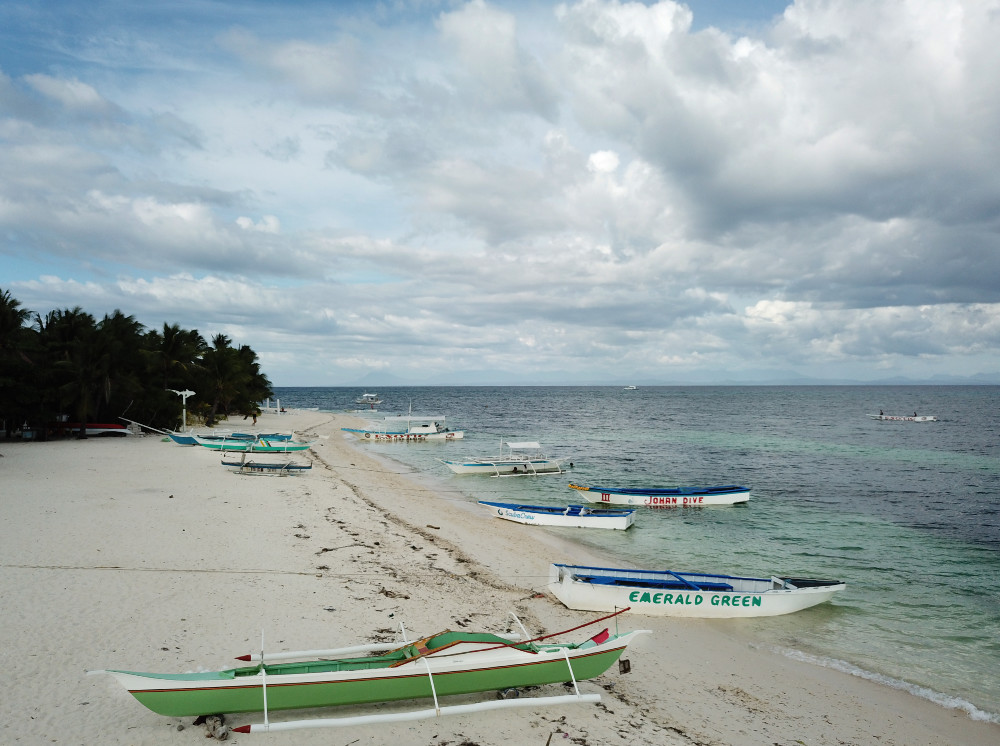
Typically diving season is from October through May. However, there are some destinations where you can dive all year long.
For the best months that offer tropical blue skies, calm seas, dry, hot and good visibility are March, April, and May. These three months make up the summer season.
But that’s not all though; current also is a deciding factor on where to dive for a beginner or an experienced diver. At many dive sites though, current calms down once you get down to the dive site itself.
Furthermore, the type of sea creatures you are interested in watching will also determine which months to dive. For example for a chance to see whale sharks, you should visit Tubbataha from March to June.
As there are so many dive sites, and with changing weather patterns, its best to do a quick google search when deciding on a time to visit.
So, as you can see the Philippines is a diving paradise with an endless array of dive sites waiting to be explored. From the beautiful and colourful coral gardens to the Erie shipwrecks, the country’s underwater world is home to a wide range of marine life that will keep you entertained for a while.
Whether you’re a beginner diver or a seasoned pro, there’s something for everyone in the Philippines.
So what are you waiting for?
Pack your gear, book your trip, and get ready to discover the best diving that the Philippines has to offer. With it’s warm waters, stunning marine life, and the friendly locals, the country is sure to leave you with some unforgettable memories.
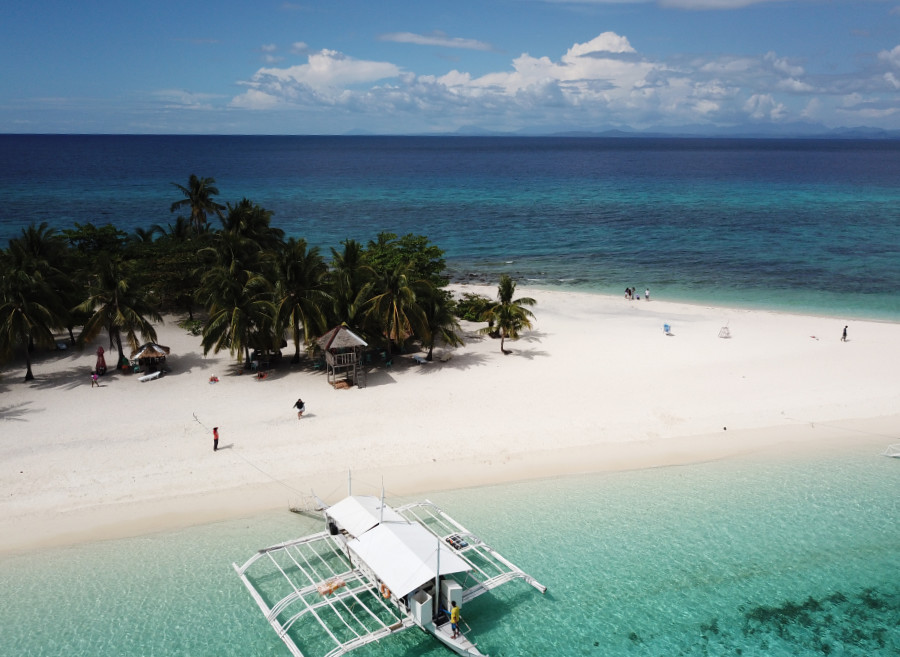
Leave a Reply